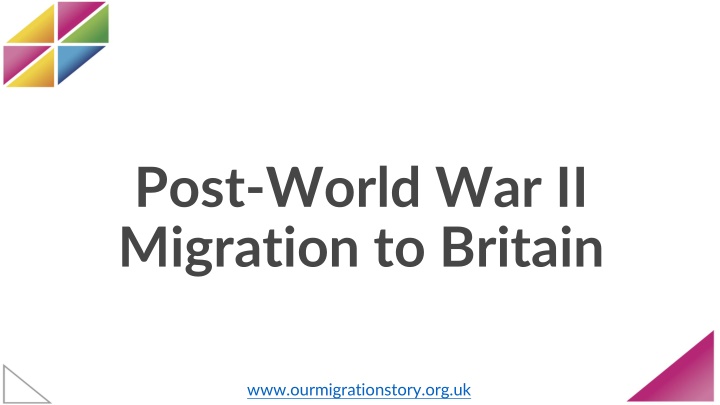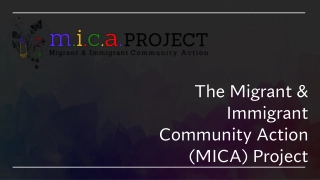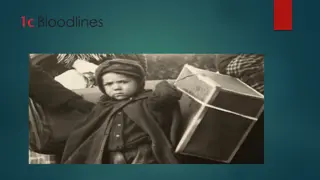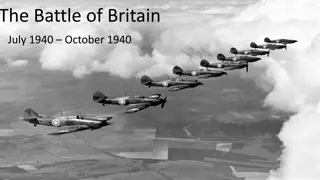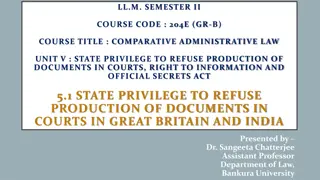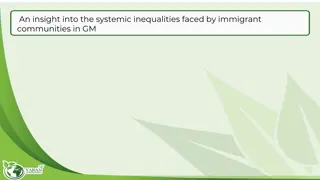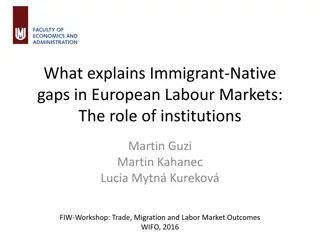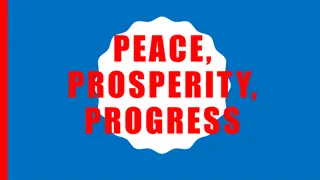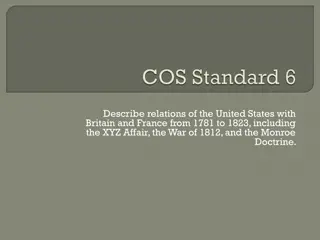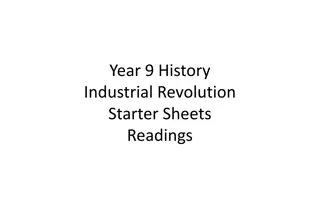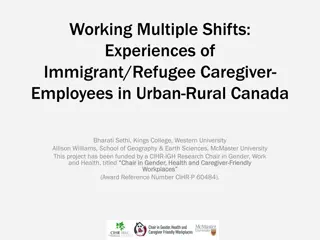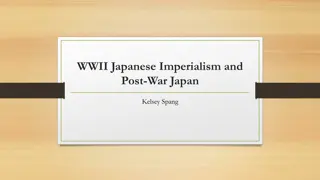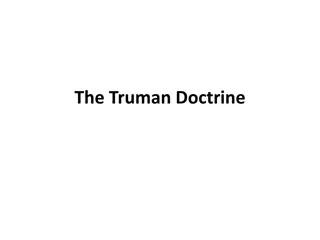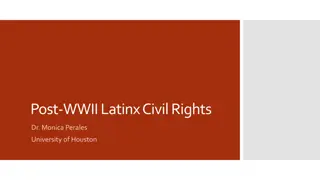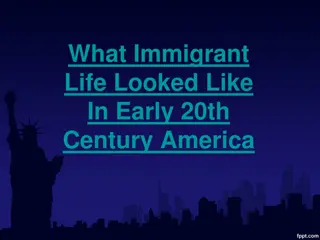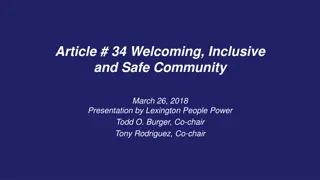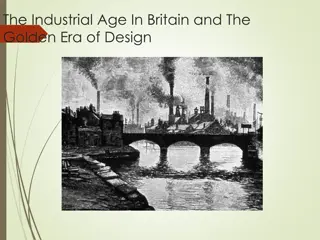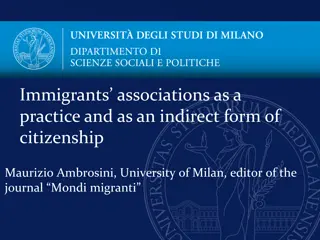Immigrant Groups in Post-WWII Britain
Explore the diverse immigrant groups that arrived in Britain post-World War II, understanding the push and pull factors that influenced their migration. Delve into the stories of Pakistani, Caribbean, East African Asian, and Polish immigrants, highlighting their experiences and contributions to British society. Utilize resources from Our Migration Story to construct a comprehensive timeline showcasing the different waves of immigrants and the circumstances surrounding their arrival.
Download Presentation

Please find below an Image/Link to download the presentation.
The content on the website is provided AS IS for your information and personal use only. It may not be sold, licensed, or shared on other websites without obtaining consent from the author.If you encounter any issues during the download, it is possible that the publisher has removed the file from their server.
You are allowed to download the files provided on this website for personal or commercial use, subject to the condition that they are used lawfully. All files are the property of their respective owners.
The content on the website is provided AS IS for your information and personal use only. It may not be sold, licensed, or shared on other websites without obtaining consent from the author.
E N D
Presentation Transcript
Post-World War II Migration to Britain www.ourmigrationstory.org.uk
Post-World War Migration to Britain Starter task Lesson Objectives To identify groups of immigrants already in Britain by 1945, and the groups who came after World War Two To identify which post-war groups were pushed and/or pulled to Britain and to explain how and why Use the first nine migration stories 1900-2000s (http://www.ourmigrationstory.org.u k/oms/by-era/1900 2000) to complete the starter sheet identifying information about groups of immigrants already in Britain by the start of World War Two. . www.ourmigrationstory.org.uk
Push and pull factors in migration There are many reasons why people migrate (move from one area to another) but they can be broadly grouped into two types: - Push factors are things that prompt people to leave a place. In other words, there are factors pushing them away from the place they live. Examples can include famine, disease, war or a lack of jobs. - Pull factors are things that prompt people to go to a certain place. In other words there are factors pulling them to a certain place. Examples can include plentiful jobs, better climate or the presence of family in the new area. Sometimes, both types of factors act on group at the same time. For example, many Pakistanis from Mirpur were pushed out of their homes because a dam was built that flooded the area; at the same time the British government gave them work permits to come to Britain because there were lots of jobs available in textile mills and factories in the Midlands and North of England.
You will research groups of immigrants who came to Britain after World War Two on the Our Migration Story website. For each group fill in the information capture sheet with as much detail as you can from reading their migration story. Four case studies to investigate: Pakistani immigrants: Families divided: the campaign for Anwar Ditta and her children http://www.ourmigrationstory.org.uk/oms/families-divided-the-campaign-for-anwar-ditta-and-her- children Caribbean immigrants: London on the move: West Indian transport workers http://www.ourmigrationstory.org.uk/oms/london-on-the-move-west-indian-transport- workers Sailing from St. Vincent: the story of Jannett V. Creese http://www.ourmigrationstory.org.uk/oms/sailing-to-new-shores-the-story-of-jannett-v- creese East African Asian immigrants: On the picket line: Jayaben Desai from East Africa to Grunwick http://www.ourmigrationstory.org.uk/oms/from-east-africa-to-grunwick-jayaben-desai Polish immigrants: Polish migration after 2004 http://www.ourmigrationstory.org.uk/oms/polish- migration-after-2004
Post-WW2 immigration timeline Finally, plot the groups you have researched on the timeline, showing when they came to Britain and whether they were pulled (above the line) or pushed (below the line). One extra group has been done for you.
